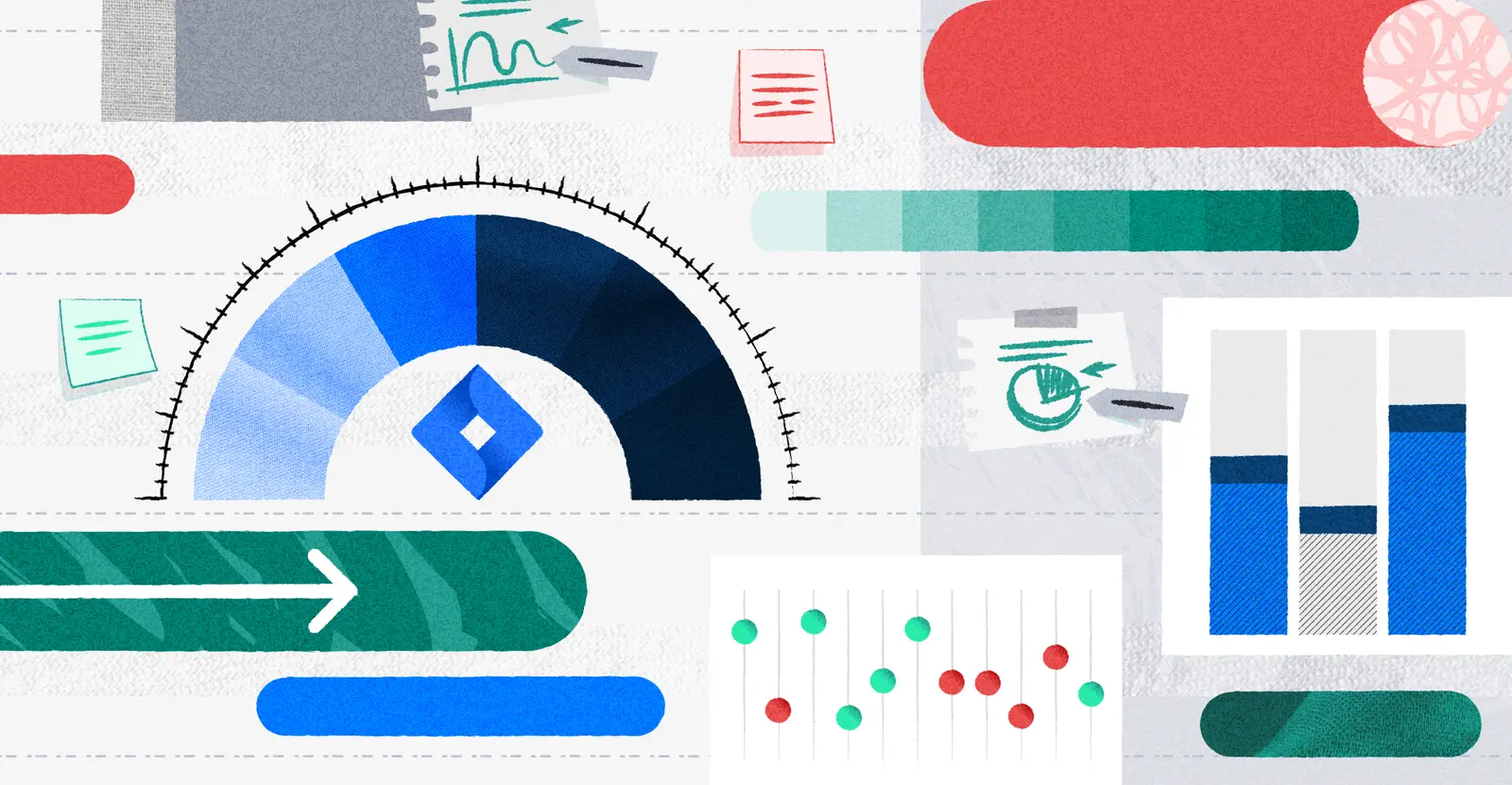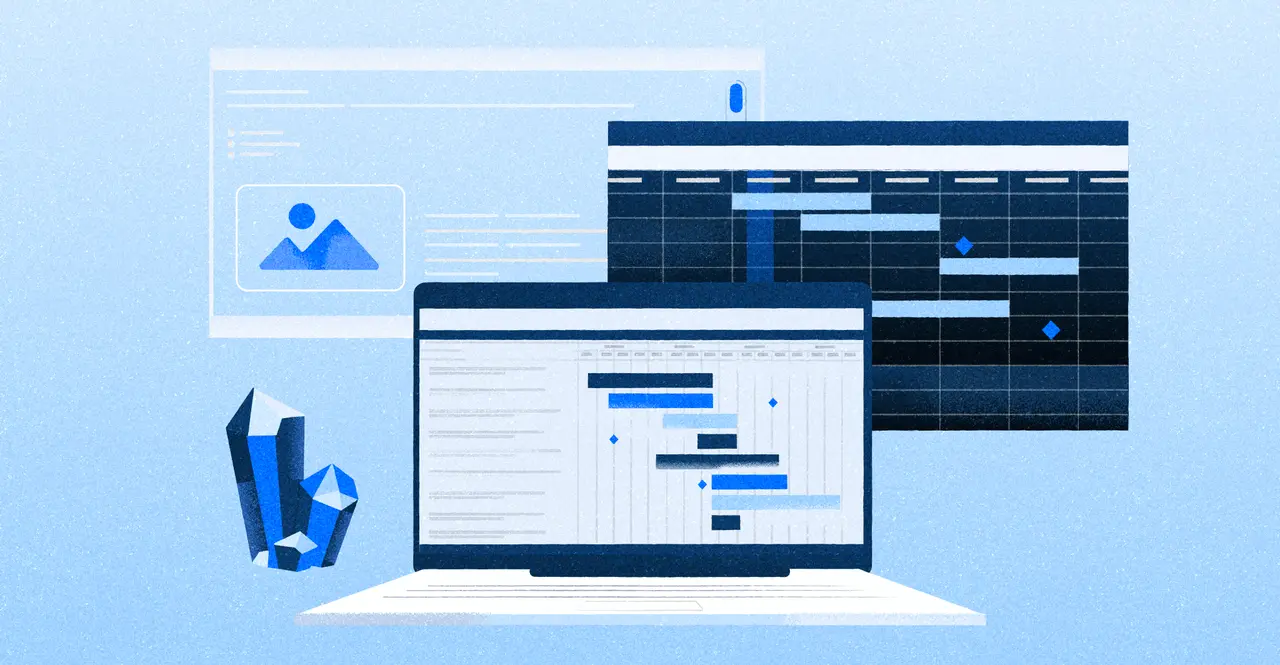
Program Management vs. Project Management: Your Complete Guide
Program management and project management are distinct concepts with different approaches, methods, and objectives.
In this guide, I’ll help you understand the differences between program and project management, why these differences matter, and how you can implement both in your organization to achieve strategic goals more effectively and efficiently.
If you need a tool to help you create high-level roadmaps, dashboards, and other visualizations of your programs that include all your projects, then try Visor.
Unlike traditional project management tools, Visor makes it easy to create, customize, and share high-level visualizations that incorporate all the projects within a program, with flexible groupings and custom calculations of the success metrics that matter to you.
Visor is easy to use, looks great, and can scale with teams of all sizes, objectives, and budgets. You can try Visor now for free.
Program Management vs Project Management Definitions and Differences
It’s easy to confuse program management and project management, but they are very different concepts and disciplines. To be successful in either, you’ll require a different approach and mindset.
Once you understand these differences you’ll be able to properly create your own programs and do program management properly.
What is Project Management?
Project management involves planning and managing a tightly scoped set of tasks to achieve a specific and clearly defined deliverable or output. A project typically has a clear start and end date, and its success is defined by:
- Completing the project on time and within budget
- The quality of the project’s deliverables
Examples of a project’s deliverables or outputs could include a new feature for a product, a website for a client, or the implementation of a security system at an office.
What is Program Management?
Program management refers to the management of or oversight over multiple projects rather than the management of a single project. All the projects within a program are usually closely related to one another and support the same strategic goal.
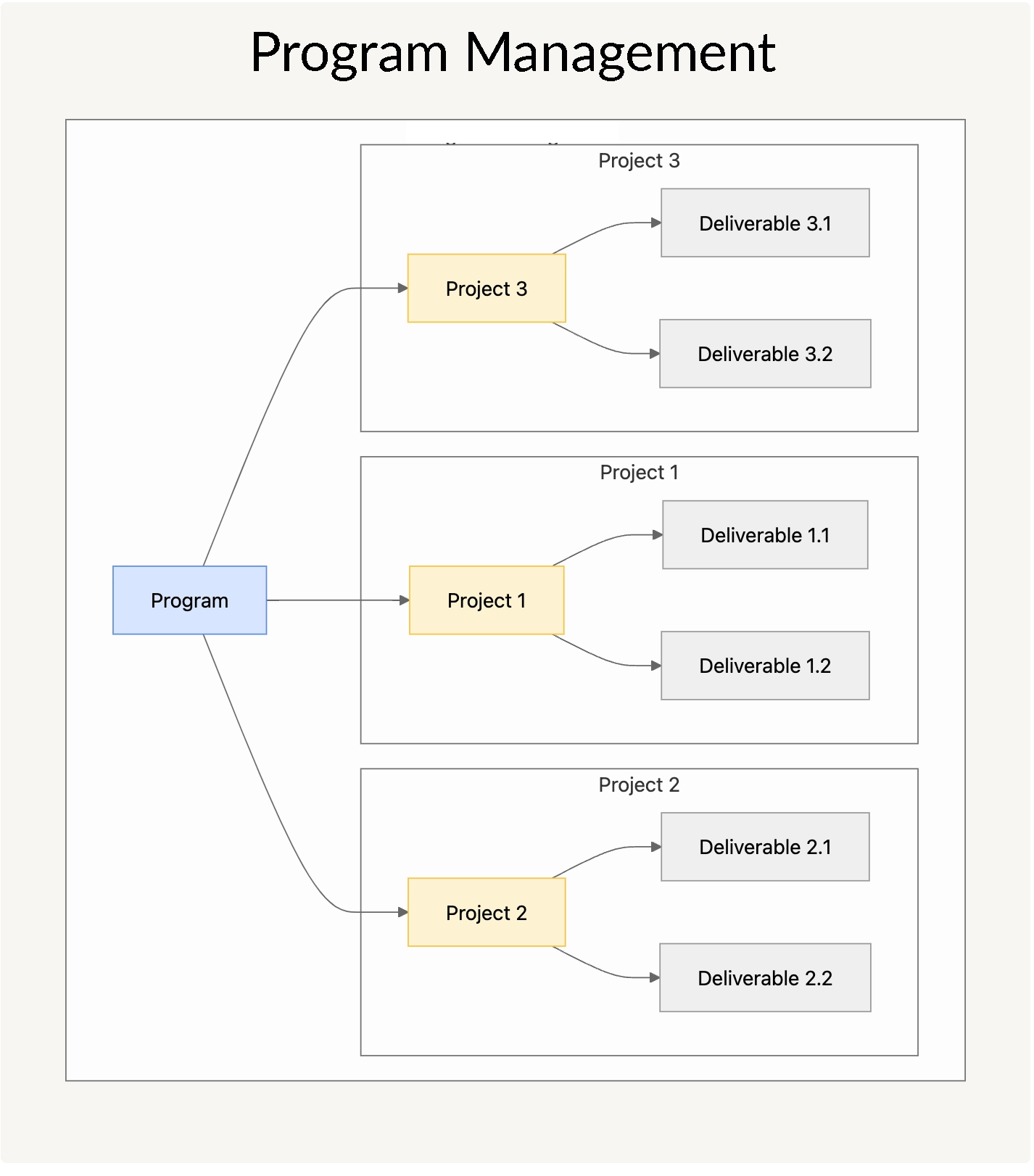
For example, a program at a SaaS (software-as-a-service) provider could be to “Improve User Experience for Product X”. Within that program you could have individual projects like:
- Adding (or improving) user onboarding support
- Modernizing the user interface (UI)
- Improving the product’s speed and performance
The diagram below illustrates how this example of a program, with its constituent projects and outputs or deliverables:
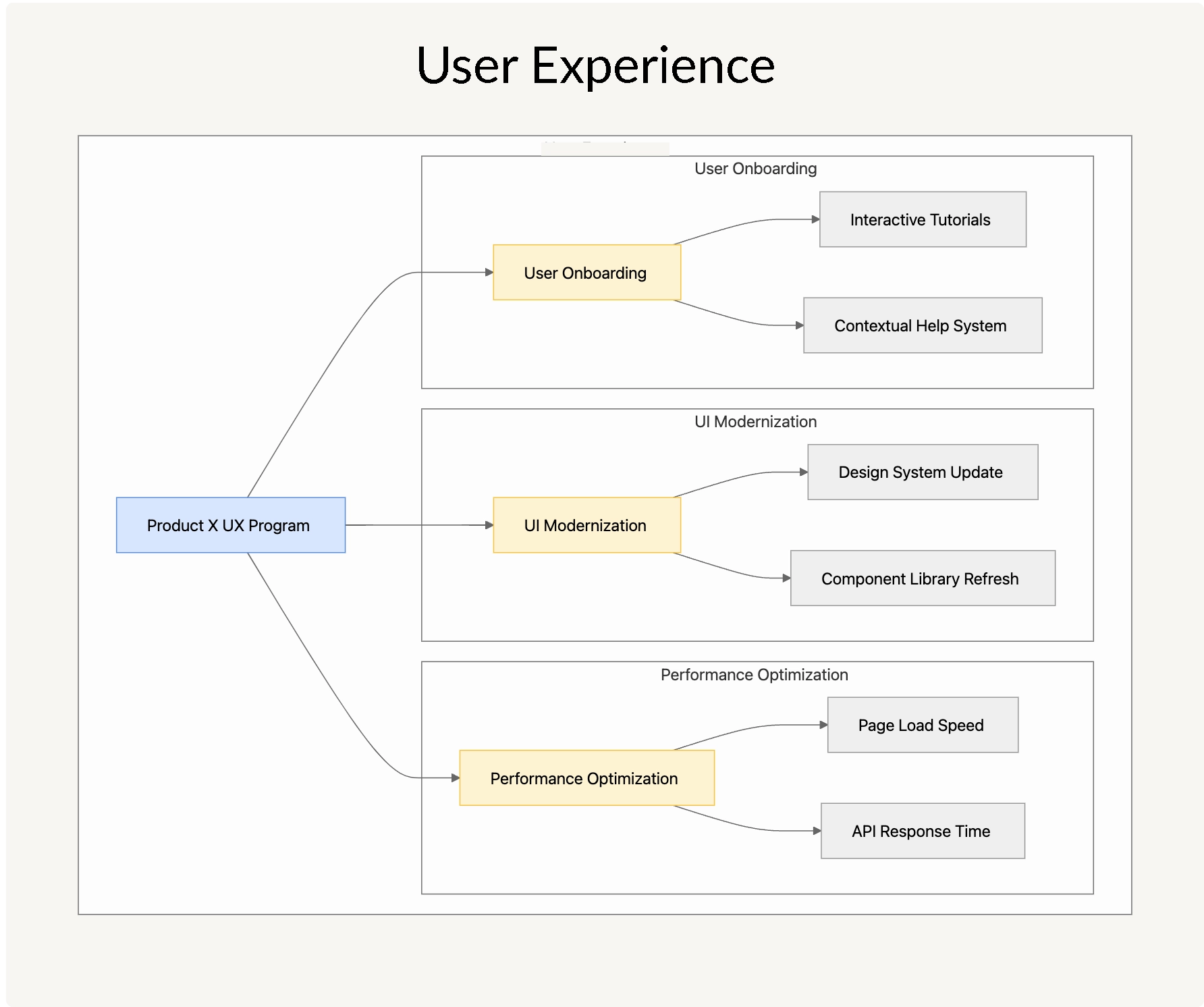
A program’s success is not simply measured based on whether its constituent projects were all on time and on budget, although this is a factor. Programs must also meet other success criteria, which can include one or all of the following:
- Achievement of strategic goals: Did the program successfully deliver or support the goals that it was aiming for (such as improved customer retention, increased manufacturing efficiency, expansion into new markets, and so on)?
- Business impact: Similar to achievement of strategic goals, but more expansive and taking into account impacts the program had that fell outside of the goals it was designed to achieve (for example a program to improve customer satisfaction that simultaneously improves the morale of the customer support team).
- Return-on-investment (ROI): Whether the program’s realized returns (both tangible and intangible) outweigh the resources used to achieve those returns.
- Resource allocation: How successfully were resources balanced across the projects in the program? Were there negative impacts of poor resource planning?
- Program coherence: Were the projects within the program fully aligned toward their shared objectives, or were they more of a collection of disparate projects?
- Projected benefits: What do we expect the program’s impact or ROI to be over time? Are the benefits sustainable over a longer period of time, and will we see further (additional) benefits in the future?
Program Management vs Project Management – Summary Table
Here is a table that summarizes the differences between project management and program management. I also discuss these aspects in more detail below the table.
| Attributes | Project Management | Program Management |
Scope | Focuses on delivering specific deliverables within defined constraints | Manages multiple related projects to achieve broader organizational goals or initiatives |
Objectives/Aims | Delivering specific outputs (such as adding two-factor authentication to an app) | Achieving a wider initiative, usually at a strategic level (e.g., enhancing security or improving customer confidence in an app) |
Timescale | Timescales can vary but will have a clear start and end point | Less bound by timescales, an ongoing process |
Definitions of Success | If the project is completed on time, on budget, and quality of the project’s output | If the program has led to the achievement of the connected strategic aim (such as improved customer confidence) and has delivered business value |
Purpose and Focus | Successful execution and delivery of a specific project and its deliverables | Aligning the projects within the program, supporting the achievement of strategic goals/benefits realization, and doing so with an attractive ROI. |
Planning Tools Typically Used | Project plans (written and visualized in outputs like Gantt charts). Plans are detailed, with subtasks and full schedules included. | High-level visualizations, charts, and reports. These can include high-level roadmaps (akin to project portfolio roadmaps), and dashboards. These are used to track performance, rather than plan out the precise details of projects. Capacity planning charts and other visualizations may be used to actively balance resources across all the projects in a program. |
Resource Management Level | Tasks are assigned to members of the project team, with estimated time or levels of effort. These tasks are then scheduled with sufficient to provide sufficient gaps between tasks and to avoid overloading any member of the project team. | Resources are coordinated and balanced between and across projects in the program, to prevent, identify, and address competing demands for resources from different projects. There is also a focus on maximizing the efficient use of resources (including people and equipment/facilities), avoiding duplicate tasks across projects and coordinating project teams to foster collaboration – to reduce resource utilization. |
Key Stakeholders | Project team and immediate stakeholders with interest in the output of this specific project | Senior management, wider stakeholder groups with interest/responsibility for the goals the program supports, and the individual managers of each project within the program. |
Program Management vs Portfolio Management
Program management and project portfolio management are closely related concepts, but their scope, objectives, and management focus differ.
Generally portfolio management sits above program management in the same way that program management sits above project management. A portfolio can include multiple programs as well as projects.
This diagram shows an example of a portfolio of projects with programs and projects:
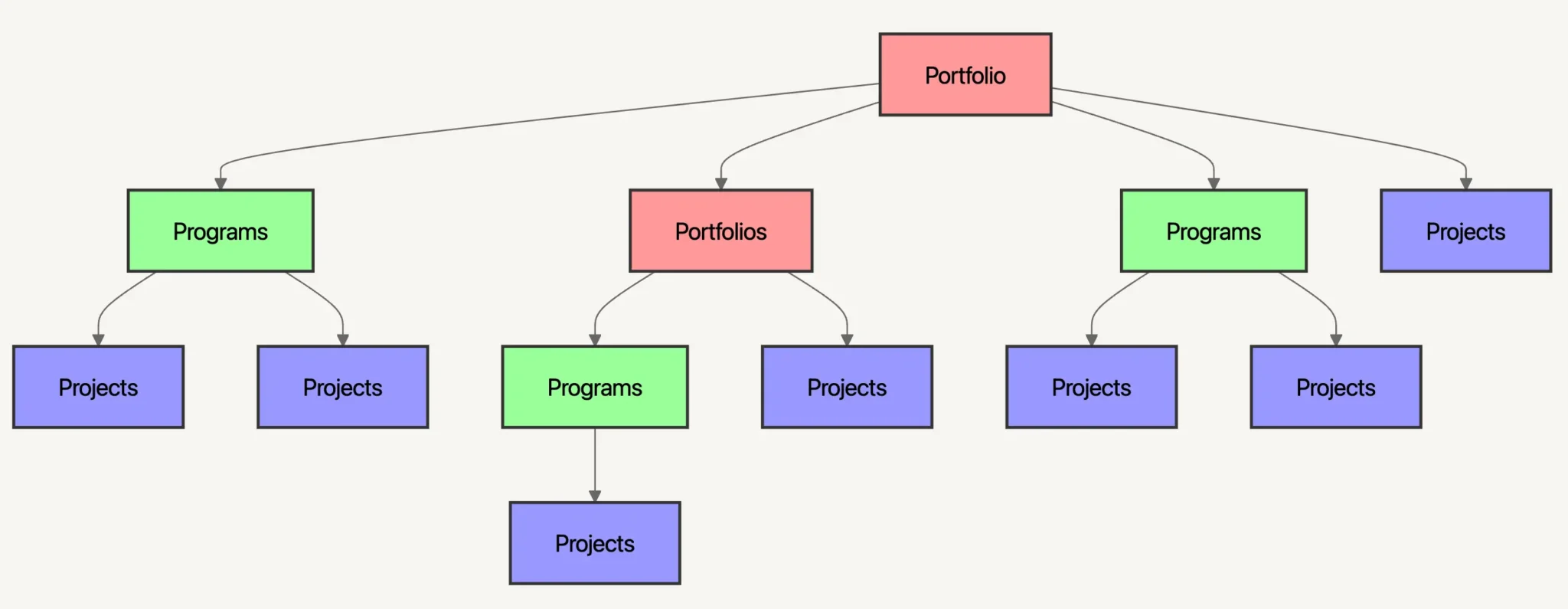
Whereas program management is focused on managing a group of related projects to achieve a set strategic goal, portfolio management has distinctive focuses in evaluating, selecting, and approving projects.
A useful analogy to understand portfolio management is to think of it as a procurement team, recruitment team, or a financial portfolio manager. The portfolio manager receives a range of proposed projects (and/or programs) through a project intake process, they then evaluate those projects based on factors including:
- Alignment to strategic goals
- Resource requirements (and if those resources are held by the organization and available)
- Levels of risk
- Expected ROI
- Expected total business impact
- Fit with organizational strengths, capabilities, and culture
- Regulatory or compliance implications
- Stakeholder interest and support
- External factors (market, environment, competition)
- Dependencies on other projects/programs
The portfolio manager will decide which projects or programs to approve and their priority level using a scoring system.
Portfolio managers will also take into account the characteristics of their overall portfolio when deciding which projects to commission, similar to the way a financial portfolio manager will select a diverse mix of stocks or investments.
For example, they may seek to create a project portfolio with a proportional mix between lower risk projects with moderate ROI, and a smaller number of higher risk projects which could deliver a higher ROI.
Full-spectrum portfolio management, with all the formal project intake, selection, and evaluation processes is typically only practiced at very large organizations, where there will usually be a dedicated individual team or individual within the project management office. Many smaller organizations still perform parts of portfolio management, but typically do not have the same formal selection or evaluation criteria and processes.
For more information read our project portfolio management (PPM) guide.
Best Tools For Program Management
Until recently, there was a real gap in the market for program management software, that sits somewhere between project management software and project portfolio management software.
Most project management software is not very good at enabling you to:
- Group multiple projects into programs
- View multiple projects (the program) in a single roadmap or other visualizations
- Report on a program of projects in dashboards and reports
- Manage and balance resources across multiple projects
Project portfolio management (PPM) software enables you to do all this, and much more, but most PPM tools are incredibly complex and difficult to use, and have huge amounts of functionality that is suited to PPM, but not program management, such as extensive project intake and evaluation processes.
These old-fashioned PPM tools are a poor fit for small-mid-sized businesses that just need an easy-to-use way to plan, visualize, track, and report on a program or programs of projects.
Fortunately, tools like Visor have now entered the market to help businesses that have been poorly served by project management and PPM tools alike. Visor enables you to:
- Group your projects into programs (including projects from apps like Jira, Asana, and Salesforce – Visor’s two-way integrations ensure project data stays in sync and up to date)
- Visualize programs in cohesive, high-level roadmaps, Gantt charts, and other views
- Create dashboards and reports to analyze and track program performance
- Easily share these real-time visualizations and dashboards with stakeholders
- Balance resources across projects and programs
Try Visor for free now – you don’t need to add a credit card and after your free trial you can choose to continue with a paid plan, or use the completely free plan (depending on which set of features you need).
A roadmap containing a program of projects created in Visor (using connected Jira data):
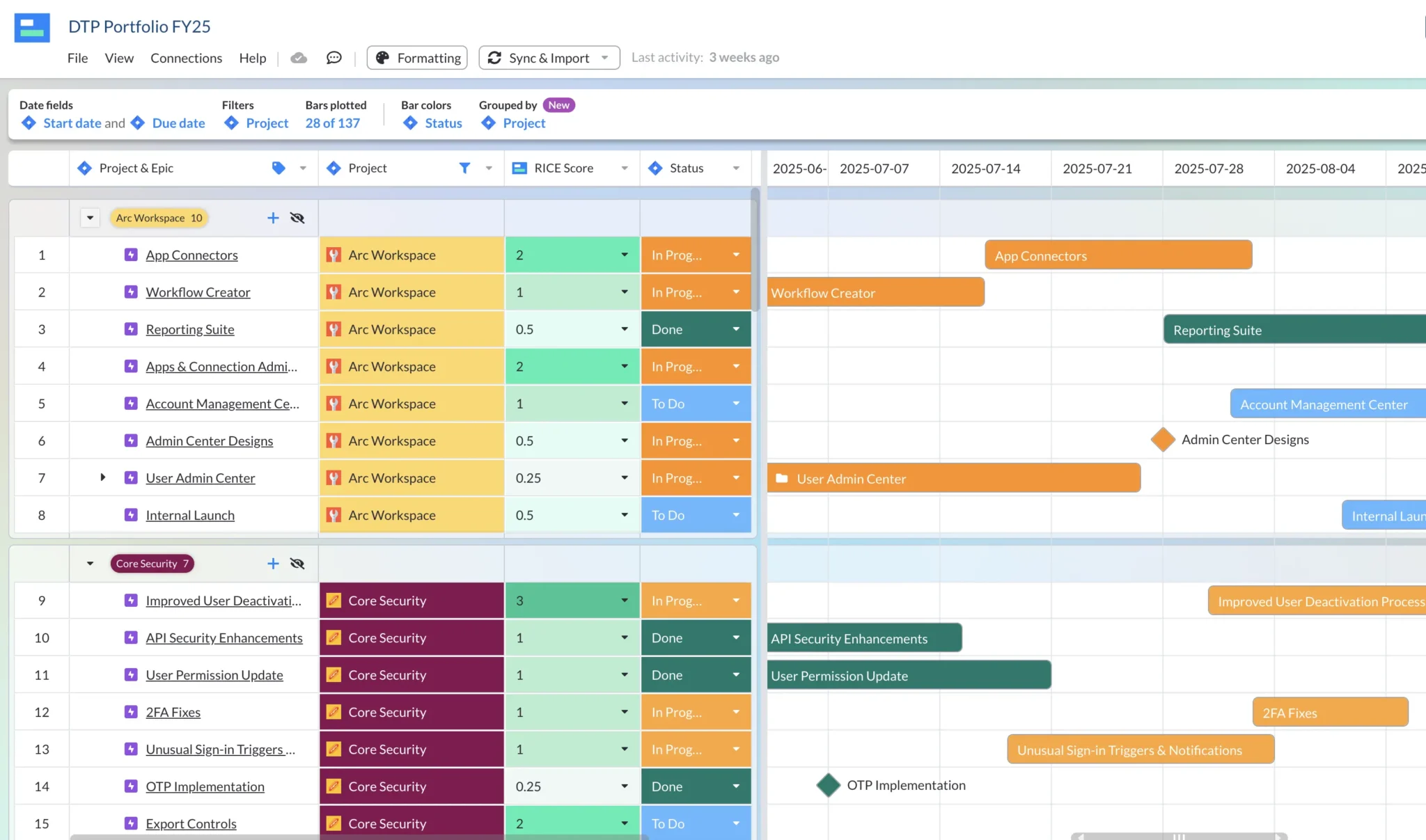
Can Project Managers Do Program Management?
Yes, project managers can do program management, which is the norm at many organizations.
Larger organizations may have specific functions and roles for program management, but most small and mid-sized organizations will instead ask project managers to take on the responsibility for program management.
This can materialize in a variety of ways, and some project managers and organizations may not realize when they are doing program management. Sometimes, people whose role is not explicitly “project manager” will have to take on program management tasks and responsibilities, too.
How Project Managers and Other Roles End Up Doing Program Management
Often, an individual will manage the majority of the projects in a particular area, or that support a specific strategic goal, for example:
- Expanding into a new market
- Improving customer retention
- Reducing operational costs
- Launching a new product
- Increasing sales of a product or service
As a result that person or team will be asked by senior management to provide updates and reports on how all the projects that align to this goal or area are progressing, and what the business impact of those projects has been.
This person or team then has to create dashboards, impact reports, high-level roadmaps, presentations, and other assets to keep these stakeholders updated.
They will also need to manage how resources are shared and allocated between all these projects and manage cross-project dependencies (such as when one project must be completed before a dependent project can start).
All of this means our intrepid project manager (or for that matter head or sales or other role) is now managing and overseeing a group of projects that support a wider, specific goal or initiative. They are now doing program management, and even if their lanyard doesn’t say it, they are in essence program managers.
Challenges Of This Model Of Program Management
The main challenges people encounter when program management becomes a secondary part of their overall responsibilities are:
- It takes hours each week to create reports that comprise all the projects in a program
- Clear goals or success measures for the program are overlooked, making it difficult to track, report, and recognize program success or failure
- Often, the additional responsibilities and authority of a person doing program management are not communicated to other stakeholders, which makes it difficult for the impromptu program manager to enforce changes over things like resource allocations and project prioritization.
- The lack of clear responsibility/authority of the program manager can also cause friction between themselves and other people managing projects within the program.
- Most project management tools don’t have any or bad functionality for:
- Visualizing multiple projects as a group (programs) in a single roadmap, Gantt chart, or other view type
- Creating reports or dashboards that incorporate data from all projects in a program
- Balancing and managing resources across multiple projects
- Managing dependencies between multiple projects
- Most project portfolio management (PPM) software is too complex and difficult to use for basic program management – it actually makes the process of program management take longer
- Most PPM software is also far too expensive for small-mid-sized businesses
How To Overcome These Challenges
To overcome these challenges, you can use software like Visor. Although Visor can’t directly make your stakeholders establish and adhere to responsibilities and authorities for program managers, it does enable you to:
- Easily quickly create crystal clear program visualizations (like high-level roadmaps, Gantt charts, tables, and more) that include all your projects
- Easily create custom dashboards to report on program metrics and performance of individual projects within your programs
- Manage and balance resources across multiple projects in your program
- Share real-time visualizations, charts, and reports with stakeholders to keep them continuously aligned and updated
- Import projects from multiple apps (including Jira, Asana, Salesforce, and Hubspot) and visualize and report on them together
Visor is not like other program management or project portfolio management (PPM) tools. It is modern, easy to use, flexible, the visualizations look great, and it is affordable and scalable for small and mid-sized companies.
You can try Visor completely free, with no requirement to add a credit card and you will never have to pay anything for the trial period.
A dashboard view in Visor showing metrics for a program of projects:
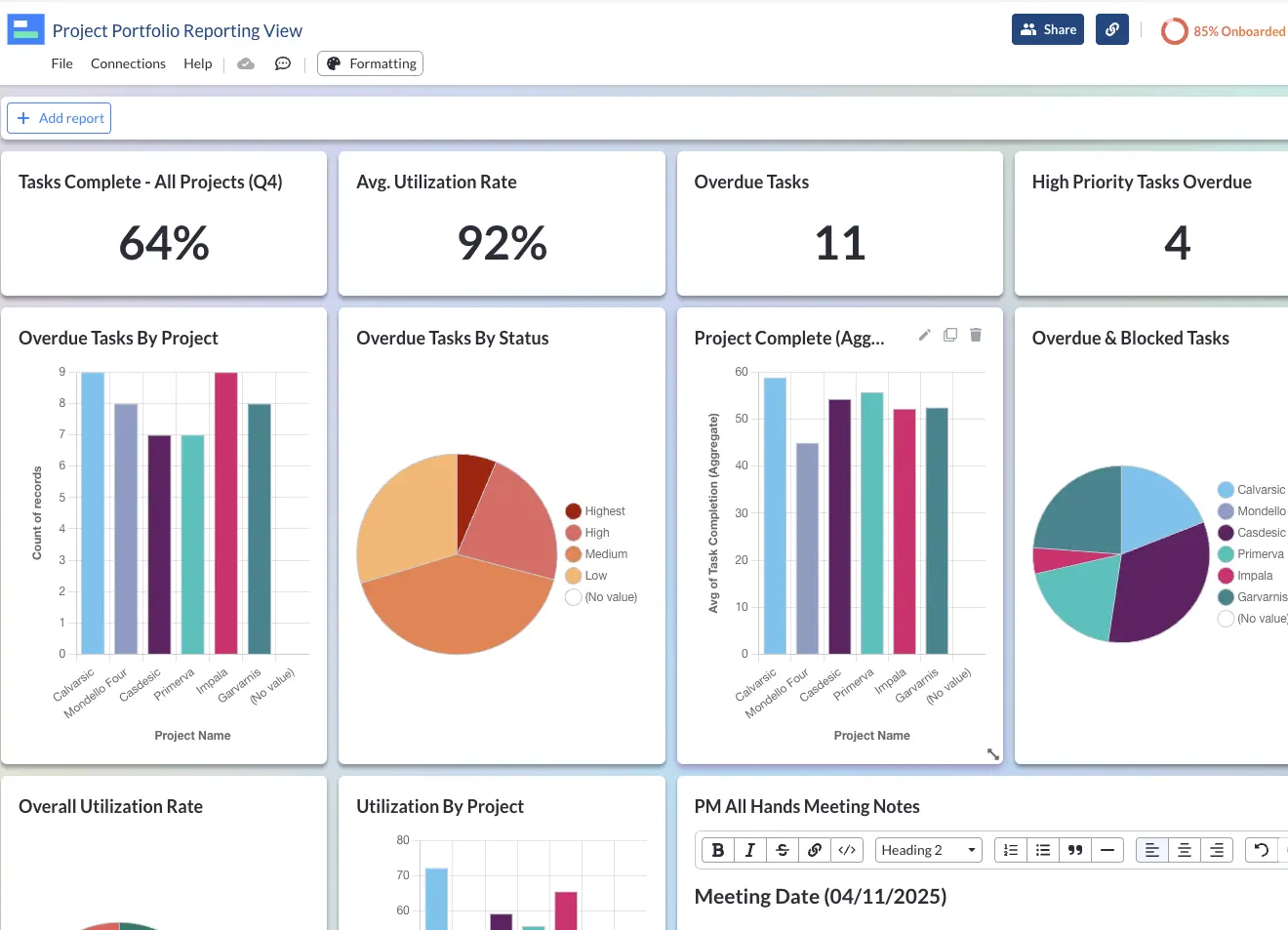
Yes, You Should Be Doing Program Management Too
Project management and program management are not the same, and understanding their differences is essential to ensure you take the right approach to both of them.
That said, if you are a project manager and unfamiliar with program management, you shouldn’t be deterred from combining your projects into programs and applying some program management principles to them.
Adopting the program management approach can greatly enhance project performance and resource utilization efficiency and help you achieve your organization’s strategic goals more effectively and reliably.
Bringing program management into an organization is also a great way to enhance your own standing and help your various project managers (even if they’re not called project managers) collaborate more effectively. This, in turn, improves your overall organizational efficiency and effectiveness.
Use this guide to take the first steps toward program management. Plus, use a tool like Visor to help you harness program management principles and approaches with ease and without incurring additional admin overheads.


